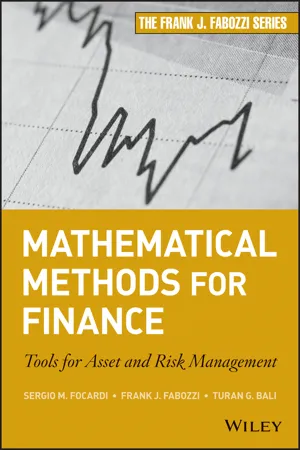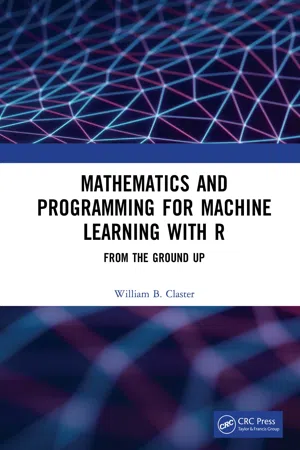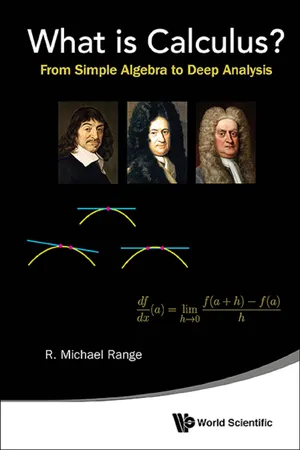Mathematics
Product Rule
The product rule in mathematics is a formula used to find the derivative of a product of two functions. It states that the derivative of the product of two functions is equal to the first function times the derivative of the second function, plus the second function times the derivative of the first function. This rule is a fundamental tool in calculus for finding the derivatives of products of functions.
Written by Perlego with AI-assistance
Related key terms
Related key terms
1 of 4
Related key terms
1 of 3
3 Key excerpts on "Product Rule"
- eBook - ePub
Mathematical Methods for Finance
Tools for Asset and Risk Management
- Sergio M. Focardi, Frank J. Fabozzi, Turan G. Bali(Authors)
- 2013(Publication Date)
- Wiley(Publisher)
- A sequence or a function tends to a finite limit if there is a number to which the sequence or the function can get arbitrarily close; a sequence or a function tends to infinity if it can exceed any given quantity. Starting from these simple concepts, rules for computing limits can be established and limits computed.
- A derivative of a function is the limit of its incremental ratio when the interval tends to zero. Derivatives represent the rate of change of quantities.
- The derivative of the product of a constant and a function is the product of the constant and the derivative of the function.
- The derivative of a sum of functions is the sum of derivatives and called termwise differentiation.
- The derivative of a product of functions is the derivative of the first function times the second plus the first function times the derivative of the second and is called the Product Rule.
- The derivative of a function of functions is the product of the outer function with respect to the inner function times the derivative of the inner function and is called the chain rule.
- A derivative of order n of a function is defined as the function that results from applying the operation of derivation n times.
- A function that is differentiable to any order at a given point a can be represented as a series of the powers of (x – a ) times the n- th derivative at a times the reciprocal of n! ; this expansion is called a Taylor series expansion.
- A Taylor series expansion series is used to approximate the value of a function.
- Taylor series truncated to the first or second terms are called first- and second-order approximations, respectively.
- A special case of the Taylor series is a Maclaurin series. The McLaurin series is the Taylor series computed around x = 0.
- Differentiation can be extended to functions of more than one variable.
- A function of n variables has n first derivatives, n- square second derivatives, and so on.
1. The rate of change should not be confused with the return on an asset, which is the asset’s percentage price change.2. If the short-term rate is variable:3. When interest rates are deterministic but time-dependent, the derivative dV /di is computed as follows. Assume that interest rates experience a parallel shift i (t ) + x and compute the derivative with respect to x evaluated at x = - eBook - ePub
Mathematics and Programming for Machine Learning with R
From the Ground Up
- William B. Claster(Author)
- 2020(Publication Date)
- CRC Press(Publisher)
Figure 10.1 ).Figure 10.1 Tangent line to the curve at a point.It imagines that we draw a tangent line to our curve at that point and answers the question, what is the slope of that tangent line. This is referred to as the “instantaneous” slope at the point, and the method for obtaining this slope is called calculating the derivative. We sometimes will speak inaccurately and say the slope of f.Although we won’t use it in our discussions, the mathematical definition is given below.There are various notations for the derivative as it was developed by different mathematicians and used in various fields over the last 300 years. Here are a few:f ′(10.1)( a )=limh → 0fh( a + h ) f( a )(10.2)dy dxf ′( x )Y ′D x[ f ]D x( f( x ))The first one is called the Leibnitz notation. They all can be read as “the derivative of y with respect to the variable x” or just “the derivative of y with respect to x”. Sometimes you will heardy dxread as “d y d x”.The reader is most likely familiar with derivatives of some of the simpler functions. For example, if y = x2 , then y = x3 . Or if y = x3 , then y′ = 3x2 . Later we will have to deal with the function y = ex and its derivative.10.2 Sum and Difference Rules
A rule, covered in Calculus, is the rule for the derivatives of sums and differences. Sum RulePractice 10.2.1(10.3)D x[=f]( x )± g( x )=[′f]( x )+ g( x )D x[±f]( x )D x[g]( x )- Use the sum rule to find the derivative of x5 + x3 .
10.3 Product Rule
The Product Rule is used when we want the derivative of a product of two functions. It says - eBook - ePub
What is Calculus?
From Simple Algebra to Deep Analysis
- R Michael Range(Author)
- 2015(Publication Date)
- WSPC(Publisher)
x —implies thatIt follows that both R ′(a ) and S ′(b ) = S ′(R (a )) must be ≠ 0, and the inverse function rule follows by dividing by R ′(a ).6.3 Product Rule
From the perspective of algebra, the product f · g of two functions defined by (f · g )(x ) = f (x )g (x ) might appear more natural and simpler than the composition f g . However, for derivatives , the opposite is the case. Since by the chain rule the derivative of a composition is the product of the derivatives, we cannot expect the simple formula D (f · g ) = D (f ) · D (g ) for the product of two functions, because the right side is already “reserved”. In fact, the rule for finding the derivative of a product is more complicated, as follows.Rule IV (Product Rule).Proof . Notice that rule I.1 is a special case of the Product Rule: (cf )′ = c ′f + cf ′= cf ′, since c ′= 0. For the proof of the Product Rule we suppose, as usual, that the two rational functions f and g are defined at the point x = a , and we rewrite the standard factorizations in the formThenIt follows that the relevant factorization for f · g is given bywhere q denotes the rational function in the edged bracket [...]. ThereforeExample. Let us take f (x ) = g (x ) = x . Then (fg )(x ) = x 2 , and hence (fg )′(x ) = 2x . Since f ′(x ) = g ′(x ) = 1, clearly f ′(x )g ′(x ) = 1 ≠ (fg )′(x ). On the other hand, the Product Rulegives the correct derivative of fg . More generally, if f (x ) =xnand g (x ) =xmfor two positive integers n and m , then, by the product and power rules,The answer agrees, as it should, with the direct application of the power rule toxn+m=xn xm.Example
Index pages curate the most relevant extracts from our library of academic textbooks. They’ve been created using an in-house natural language model (NLM), each adding context and meaning to key research topics.
Explore more topic indexes
Explore more topic indexes
1 of 6
Explore more topic indexes
1 of 4


